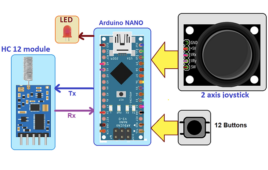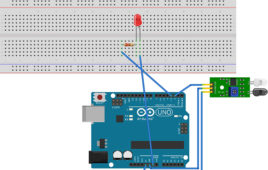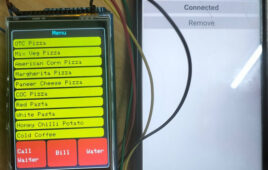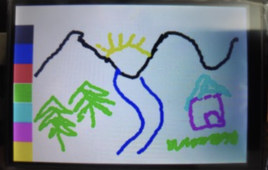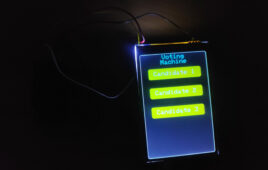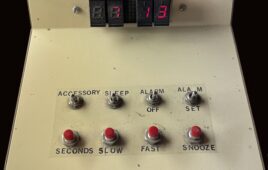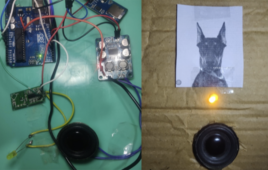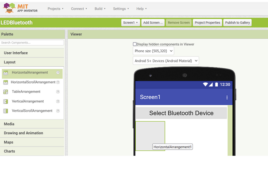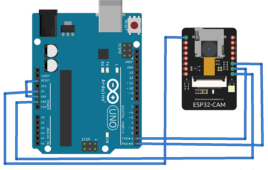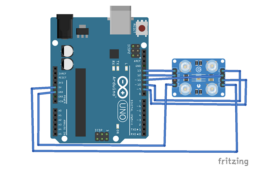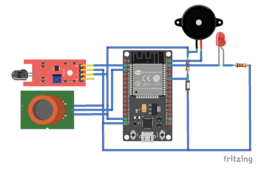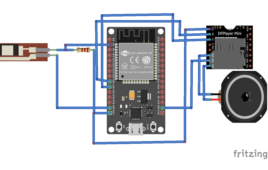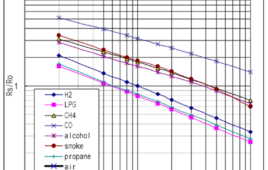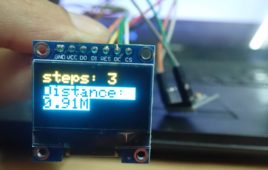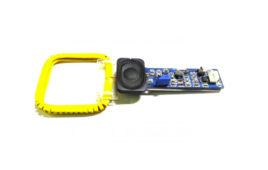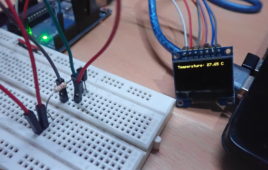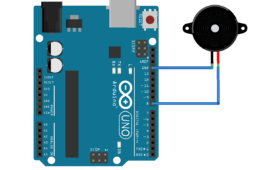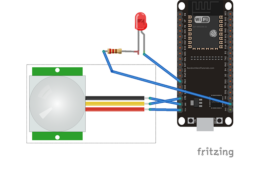In this project, we’ll design an omnidirectional, moving pick-and-place robot. First, let’s cover how the robot is built. The robot’s build As shown in Figure 1, the robot consists of two sections: An omnidirectional moving platform A robotic arm The omnidirectional platform The robot is built using one circular wooden plate, three dc gear motors,…
Arduino-based optical proximity sensor using IR LEDs
Proximity sensors are used to detect something approaching near. These sensors are useful in many applications like collision avoidance, obstacle detection, path following, touchless sensing, motion detection, and object detection. There are different types of proximity sensors like optical, ultrasonic, capacitive, inductive, and magnetic. The capacitive, inductive, and magnetic proximity sensors are used in specific…
Fingerprint-based access control system using Arduino and R307/Adafruit fingerprint sensor
Optical fingerprint scanners are prominent security devices nowadays. These scanners are low-cost and easy to use with any embedded hardware platform. The scanners have built-in memory and a controller to store and compare fingerprints. Usually, optical fingerprint scanners have a USB and/or UART port to communicate with external controllers or computers. The scanner handles enrollment…
How to build an IoT-based digital menu using the MIT Inventor App
Digitalization has significantly shifted us toward a paperless society, impacting both personal and professional lives. Take restaurants, for example, where many establishments now offer digital menus. Providing a digital option offers several advantages to restaurant owners, their customers, and the environment. It reduces paper waste, allowing for an interactive experience and real-time updates for the…
How to build a paint application using Arduino
In this project, we’ll build a paint application on Arduino UNO/Arduino Mega that runs on a 3.5-inch TFT touchscreen display based on the ILI9486 driver. The ILI9486 touchscreen has a display resolution of 320×480 pixels. Using a stylus, you can draw, paint, and write on it (even in your own handwriting ). Required components Arduino…
How to build an Arduino-based biometric voting machine
Typical electronic voting machines require voters to push a button to cast their ballots. However, there have been security concerns with these devices and whether they’re at risk for tampering. One solution is to use biometric-based voting machines, which use fingerprint matching or a retina scan to verify an authorized voter. In this project, we’ll…
Home-made digital clock keeps time after 45 years
Look inside this one-chip clock built from surplus parts. With the case open, replacing parts waiting to fail seemed like a good idea. In my second year at WPI, I found myself in “B term” where I had a scheduling problem. Being as WPI operates on a four-term academic year, I couldn’t find a one-term…
How to design a security system that sounds like a guard dog
It’s been said that one of the best home security systems is owning a dog. In this do-it-yourself (DIY) circuit, we’ll design a unique system that lets you take advantage of a guard dog for security without ever needing to walk or feed it. This DIY system “barks” like a dog whenever motion is detected…
How to control LEDs using the MIT App Inventor and Bluetooth
In a previous tutorial, we discussed the MIT App Inventor, a popular online platform for building mobile applications using visual programming. The platform is helpful for quickly prototyping Internet-of-Things (IoT) applications and simple embedded systems that interact with mobile devices. We already reviewed the platform’s architecture and user interface. Its visual programming platform is ideal for…
How to build a facial recognition system using ESP32-CAM
Facial recognition technology identifies individuals by analyzing and comparing their facial features. It uses biometric patterns and algorithms to map and distinguish a person’s unique characteristics. The technology has become an essential component of many security applications. Facial recognition is commonly used for access control, surveillance, biometric authentication, identity verification, criminal identification, attendance, emergency response,…
How to use the TCS230/TCS3200 color-recognition sensor with Arduino
Color detection is the process of identifying and distinguishing colors within an image, video, scene, or object. Many embedded and robotic applications require this feature, as it’s useful for sorting, selection, test strip reading, path determination, and more. Two standard sensors used for color detection include TCS230 or TCS3200. TCS3200 recognizes various colors based on…
How to build a fire alarm with SMS and WhatsApp alerts
Fire alarms are critical in homes and buildings, mitigating fire risks and ensuring safety. These alarms aim to safeguard lives and property, providing a warning and initiating emergency procedures. In this project, we’ll build a fire alarm system using ESP32, a flame sensor, and an MQ2 gas sensor. This device will trigger a buzzer and…
How to build a sign-to-speech converter
Sign language is a system of communication using visual gestures. However, not everyone understands sign language. So, in this project, we’ll build a device that converts hand gestures into speech. What’s required: flex sensors, a DF Mini Player, and a microcontroller that has an analog input and supports serial communication via a universal asynchronous receiver/transmitter…
Arduino-based portable pollution monitor with OLED display
A majority of middle-aged people suffer from health issues like asthma and breathing problems, particularly in cities. Air pollution is the major cause of it. In this project, we have designed a portable device that detects different air pollution metrics and displays them on a small OLED screen. People with respiratory issues can use the…
Arduino-based walking steps and distance calculator
A very common feature in Android and iOS fitness apps is calculating the number of steps the user walks and the distance he covers. These apps calculate the number of steps walked by the user either using GPS location and manipulating the geospatial data or by monitoring the acceleration vector of the device using an…
How to design an Arduino-based RLC metal detector using an RC-A-354 sensor
Metal detectors offer several useful applications. A few examples include: Security checks Positioning detection for production equipment Elevator floor control Mineral prospecting Unearthing relics and artifacts Collecting traffic statistics Metallic waste detection Game entertainment Each detection circuit employs different electronic components and designs. A simple metal detector can be constructed using an RLC circuit. In…
Arduino-based altitude meter using BMP180 sensor
BMP180 is a digital pressure sensor designed for low-power, low-voltage operation in mobile phones, navigation devices, and personal digital assistants. The sensor has an I2C interface to communicate sensor data. It can operate on 2.5~3.6V and consumes only 12 uA even in the ultra-high-resolution mode. The sensor can be used for several applications, including measuring…
How to design Arduino-based water temperature monitor using DS18B20 1-wire temperature sensor
Environment sensors are of great importance in embedded applications. Many temperature sensors measure the ambient temperature or temperature of a surface. For measuring water temperature and other fluids, waterproof temperature sensors are required. One of such temperature sensors is DS18B20. This sensor can measure the temperature of the air, liquids like water, and ground. The…
How to play tune for any song or music on Arduino
When it comes to general-purpose microcontrollers, nobody expects them to perform heavy-duty software operations. Microcontrollers are simple devices that control binary devices and talk over serial interfaces. Building audio/video or multimedia applications on microcontrollers is never attempted. It is challenging and infeasible in most situations to handle any kind of multimedia through microcontrollers. Microcontrollers are…
How to build a WhatsApp-notifying home security system
A security alarm detects unauthorized entry into a home or building. In the past, these security devices simply triggered a loud siren when an intrusion was detected. As technology advanced, the systems were equipped with GSM modems to send an SMS alert to the home or building owner whenever an intrusion was detected. One drawback…

